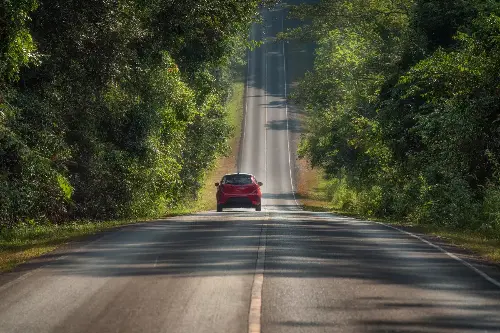Driving through mountainous terrain can be an exhilarating experience that offers stunning views and the thrill of navigating challenging roads. However, driving an automatic car on steep terrain requires a unique set of skills to ensure both safety and vehicle control. Here are some essential techniques to help you master mountain roads, whether you're heading to the Alps or tackling the peaks of the Lake District.

Understanding Your Vehicle's Capabilities
Before setting off on a mountainous adventure, it's vital to understand your vehicle's capabilities, especially if you're driving an automatic car. Check your owner’s manual to familiarise yourself with features like Hill Descent Control (HDC) if your car has it, which can help manage speed on steep descents. Be aware of how your car handles shifts in automatic transmission and the power delivery of your engine, so you can anticipate how it will react on steep inclines and declines.
Navigating Uphill Drives
When approaching an uphill drive, it is important to maintain a steady speed. If you start to slow down, don’t be afraid to use a lower gear if your vehicle has a manual mode. This will help the engine deliver more power and prevent it from struggling. As you climb, keep an eye on your temperature gauge as steep inclines can cause engines to work harder and potentially overheat. If this happens, consider pulling over in a safe place to let the engine cool down.
Taking Control on Downhill Slopes
Descending mountain roads can be more challenging than climbing them due to the force of gravity pulling the vehicle downwards. Use engine braking by shifting into a lower gear to control your descent speed. This technique helps to reduce reliance on your brakes, preventing them from overheating. However, remember that in fully automatic mode, modern cars may not downshift as you might expect, so using your gears manually can provide better control.

The Art of Braking
Knowing when and how to apply brakes is crucial in mountain driving. Always brake before you enter a curve, not while you're in it. This helps maintain traction and stability. On long descents, practice 'feathering' the brakes – lightly tapping them rather than holding them down – to avoid overheating and wear. When driving an automatic car, don’t rely on the 'drive' mode to do all the work. Sometimes selecting the gears yourself can provide better braking control.
Cornering with Confidence
Mountain roads are replete with winding turns that can challenge the most experienced drivers. Use the "slow in, fast out" technique. Slow down as you approach the corner, downshift if necessary, and accelerate gently but steadily as you come out of the turn. This keeps your car stable and enables you to use the full traction available.
Dealing with Altitude and Weather Changes
Altitude and weather can vary vastly in mountainous areas. As elevation increases, the air becomes thinner, which can reduce engine performance and modify how your brakes respond. Be prepared for sudden weather changes, such as fog, rain or even snow. Keep your headlights on for visibility, reduce speed, and maintain a safe distance from the vehicle in front of you.

Overtaking and Being Overtaken
Overtaking on mountain roads should be done with utmost caution. Only do so if you have a clear view of the road ahead and it’s safe to pass. Always signal your intentions to other drivers. If you are driving slower than the traffic flow, keep to the left and allow others to pass safely when it is safe to do so.
Emergency Preparedness
It's important to be prepared for emergencies when driving in mountainous regions. Ensure your car is equipped with safety essentials like a first aid kit, flashlight, and blankets. Check that your mobile phone is fully charged or carry a portable charger – some remote areas might not have charging facilities.
In conclusion, mastering mountain roads require a comprehensive understanding of your automatic vehicle, focused attention on the road, and the ability to make quick and informed decisions. Adaptive driving techniques, like adjusting to varying road conditions and being aware of how your car responds to steep inclines and descents, are crucial for a safe and enjoyable mountain driving experience. Remember, the goal is to harmonise with the landscape – letting the rhythm of the road and the capabilities of your car guide you through the mountains safely and serenely. Whether you're tackling a short trip or a long expedition through the peaks, comfort and confidence behind the wheel are as essential as the breathtaking views you'll encounter along the way.
